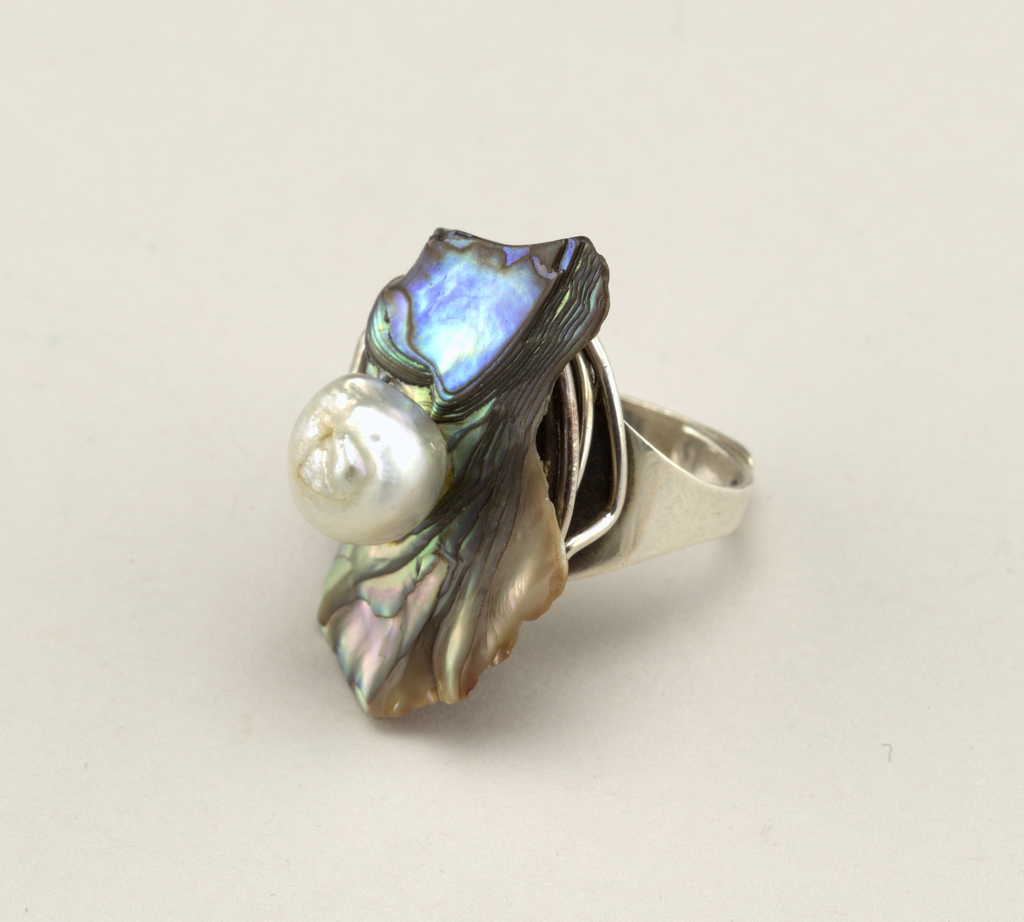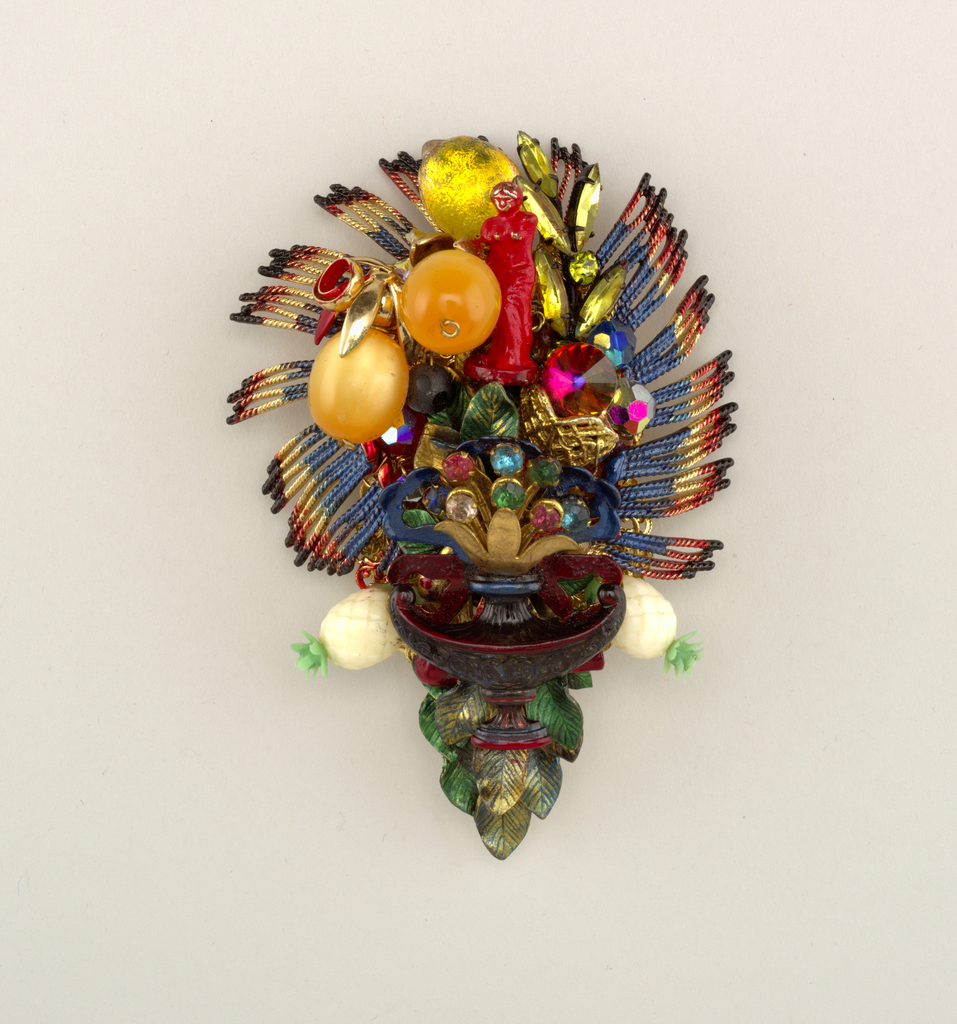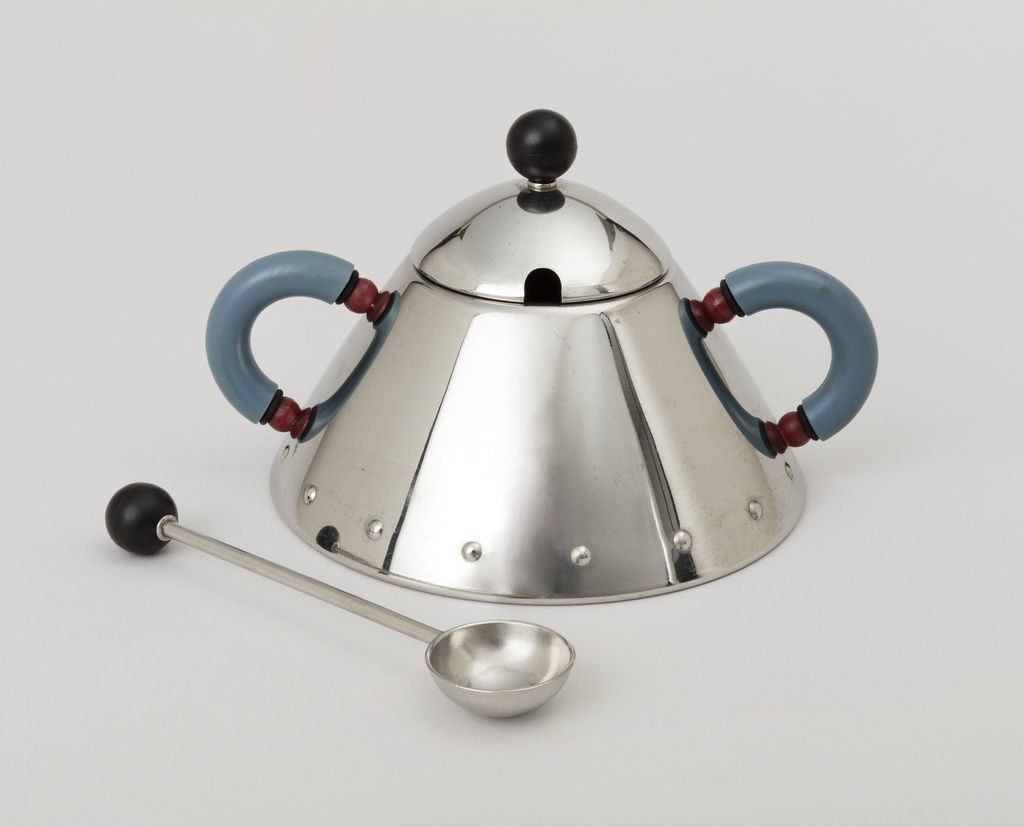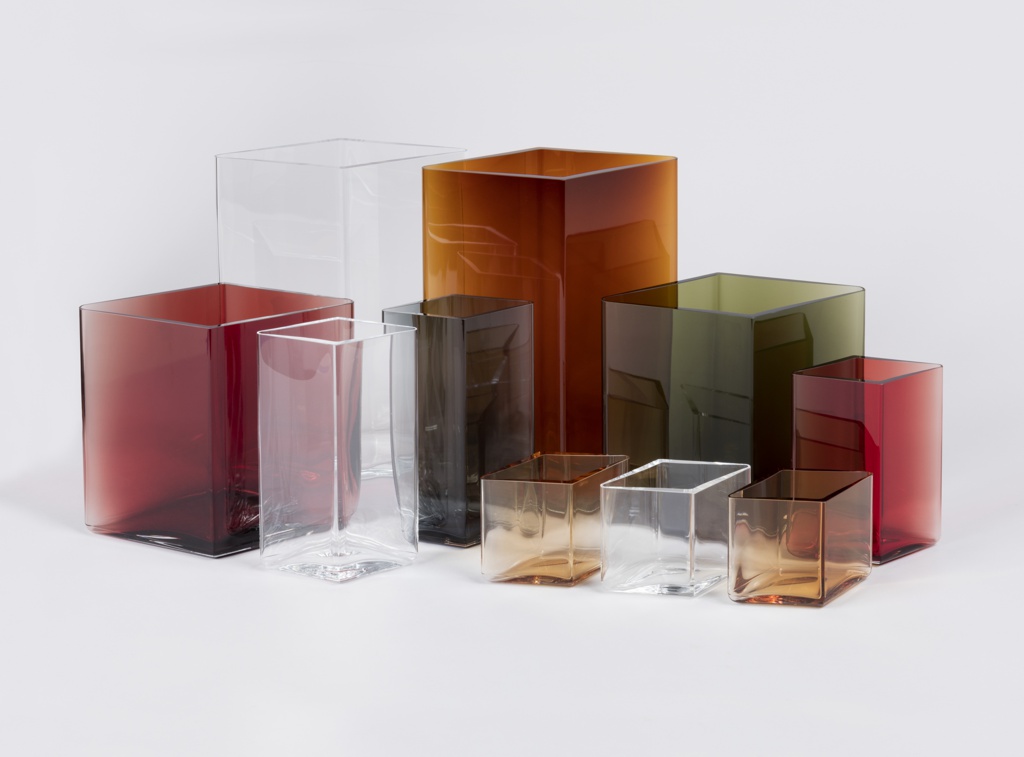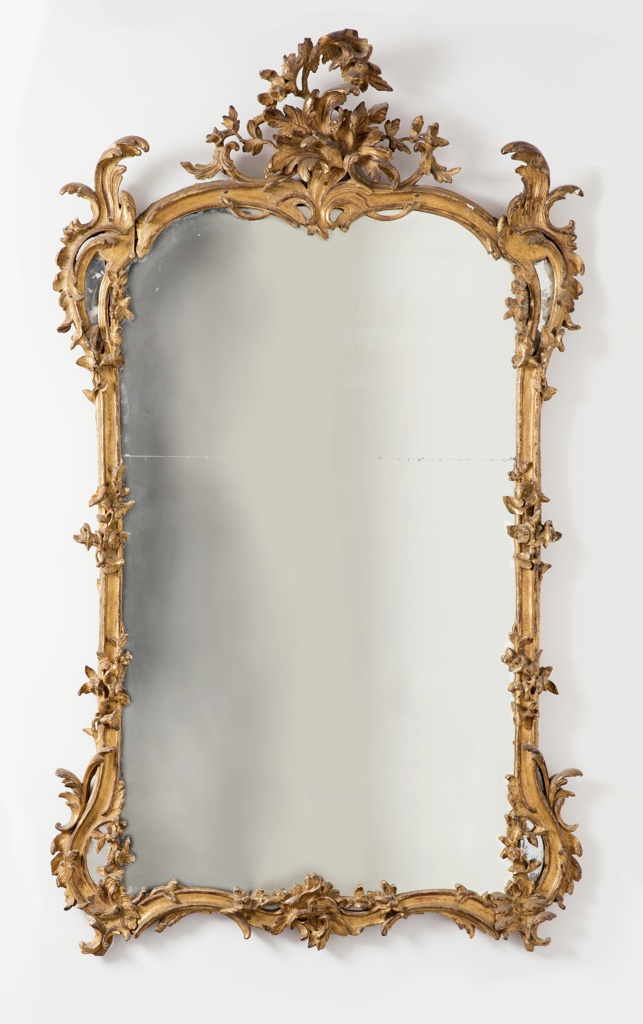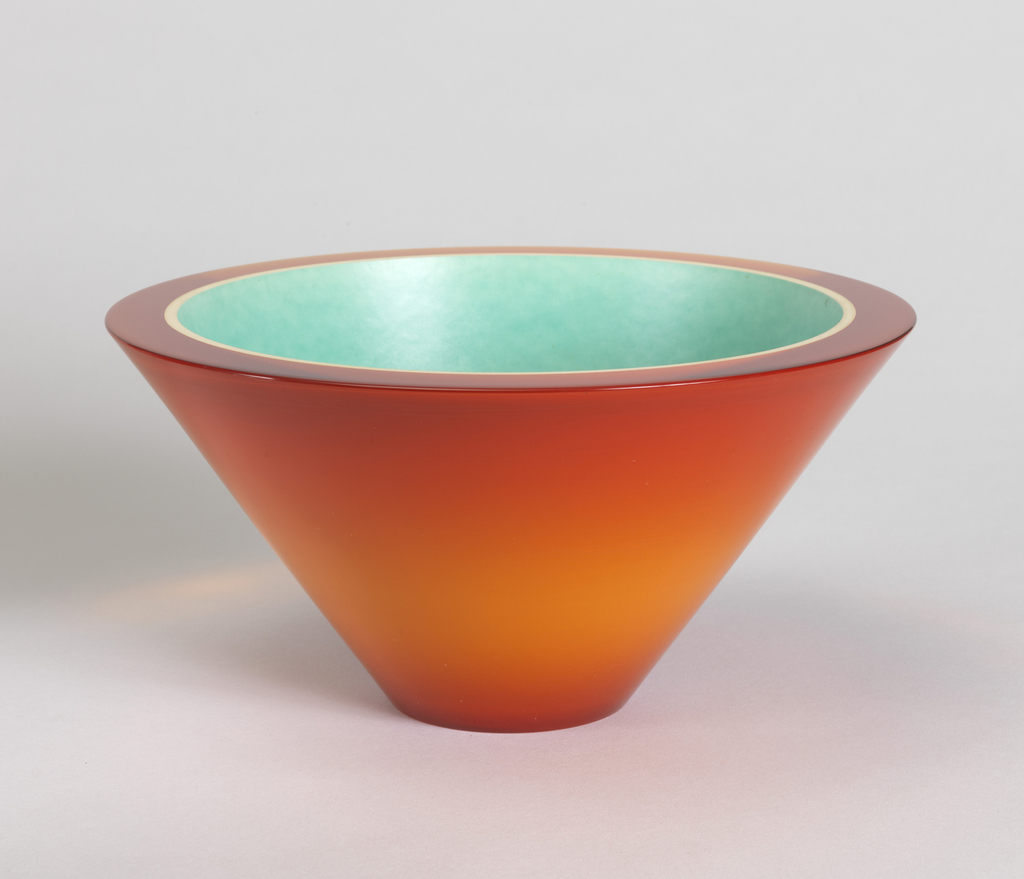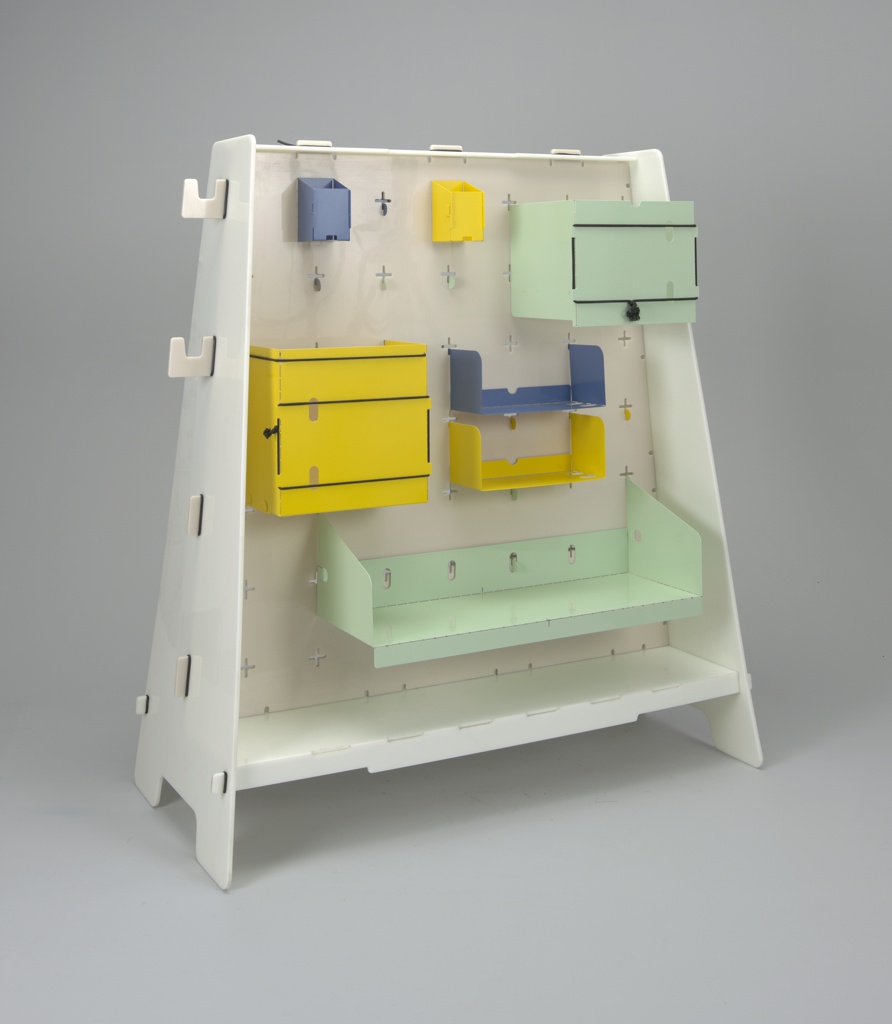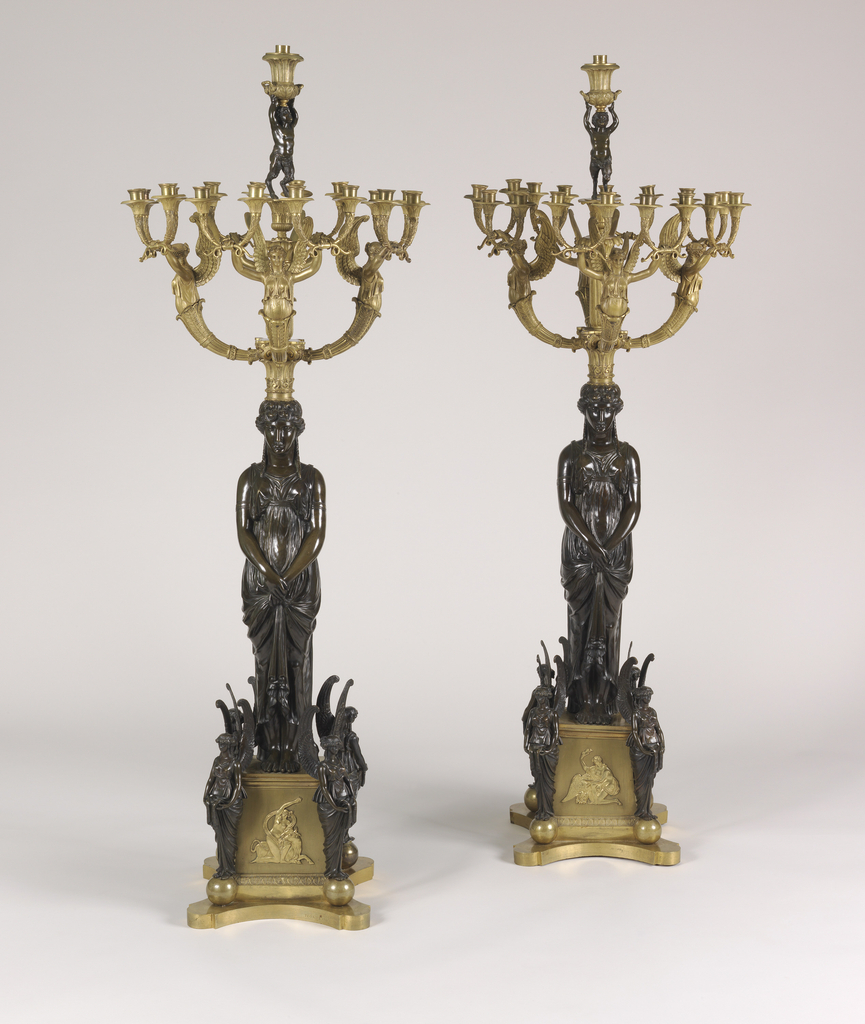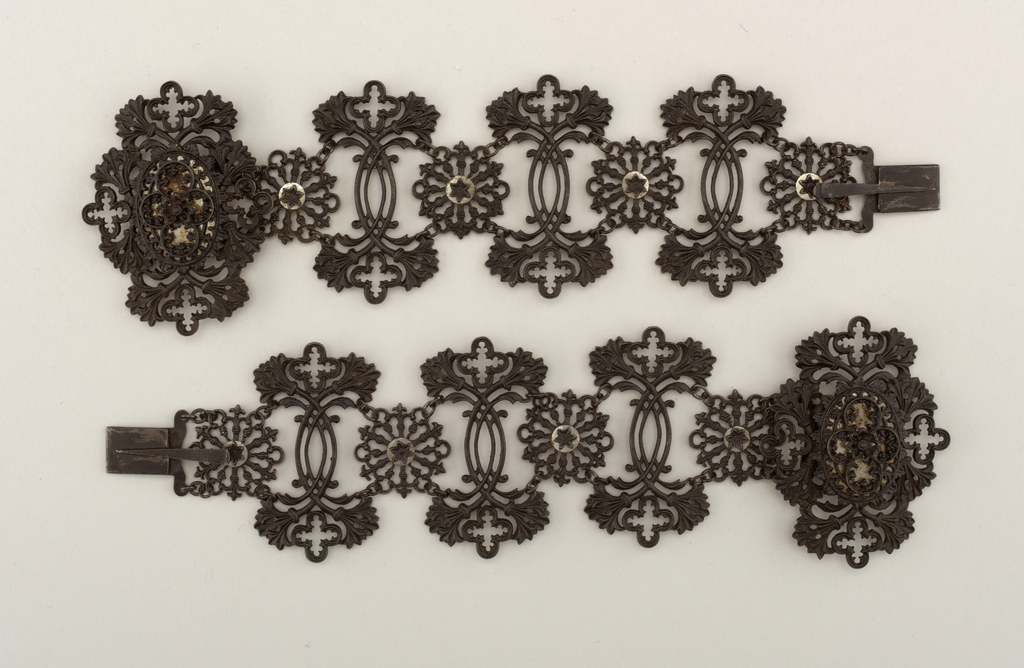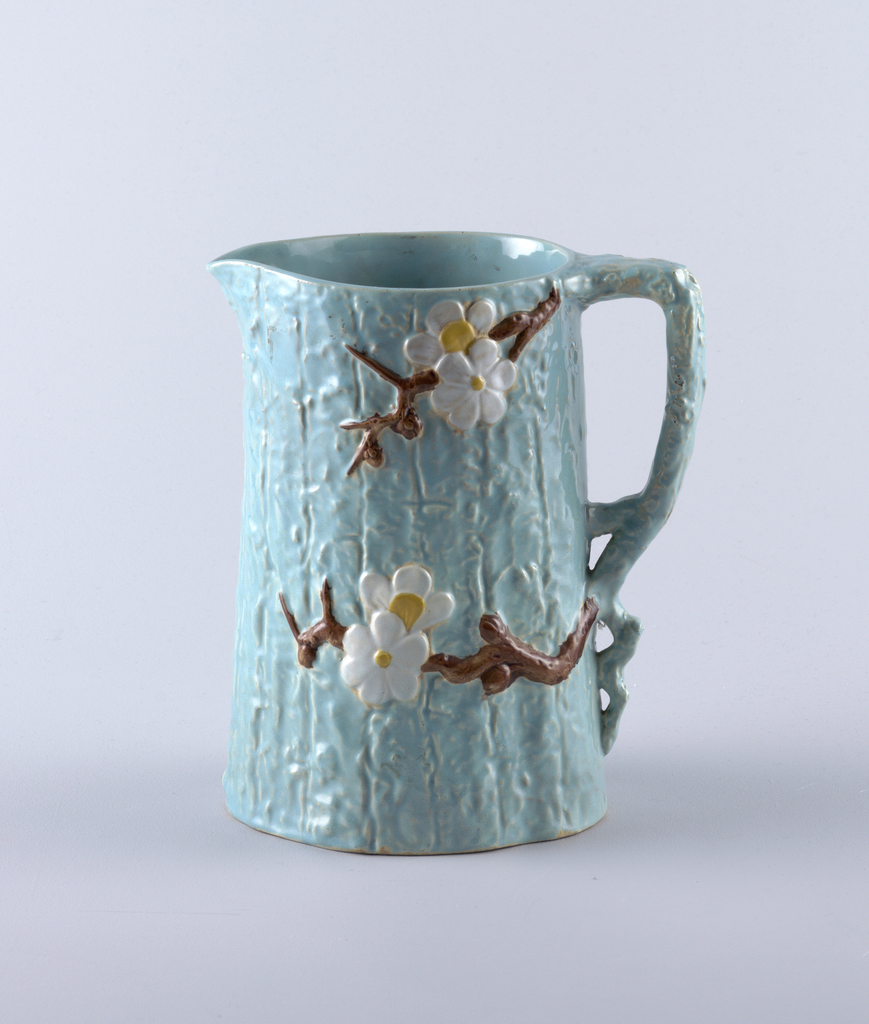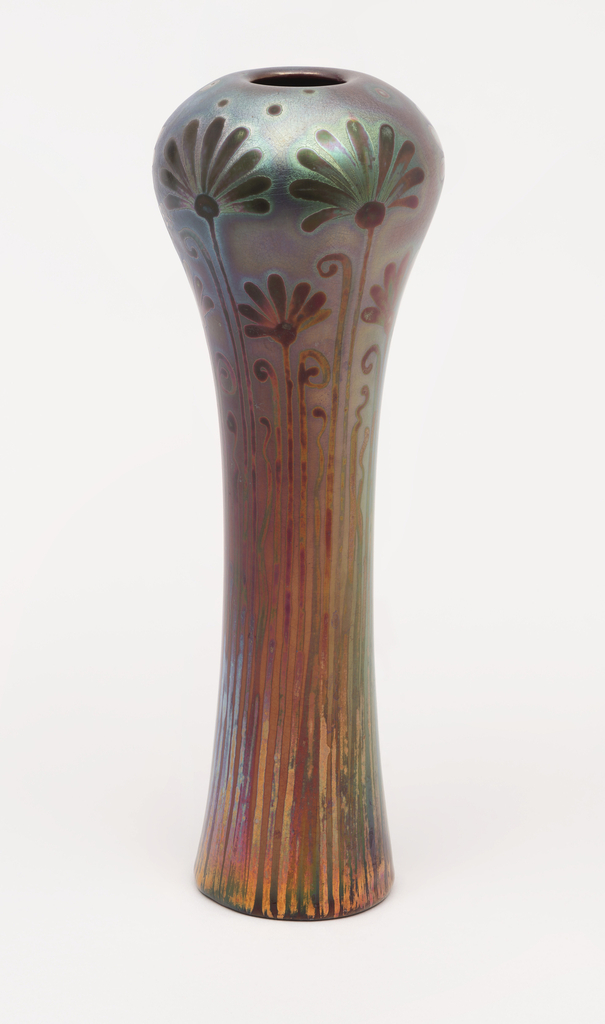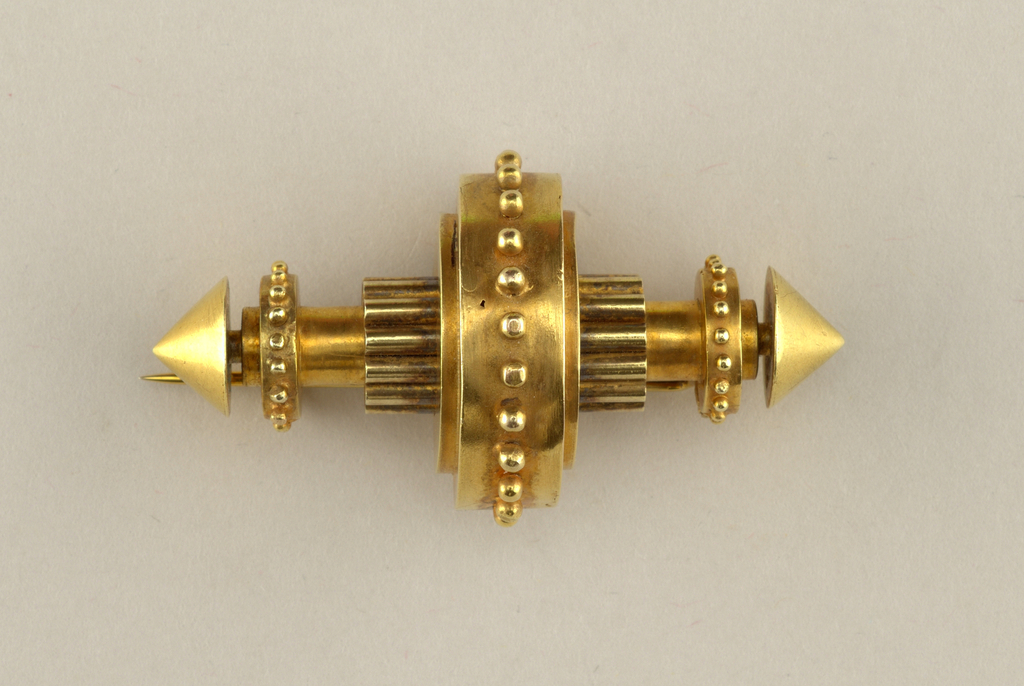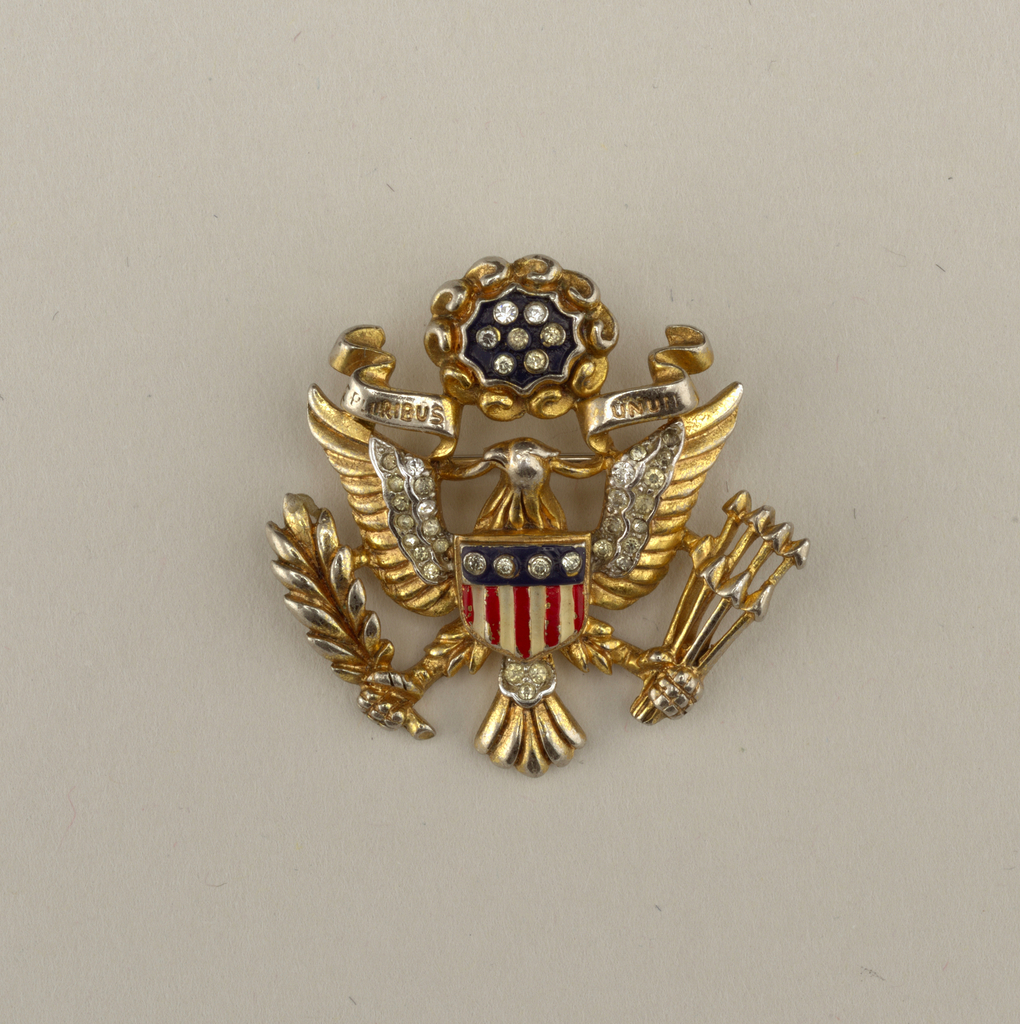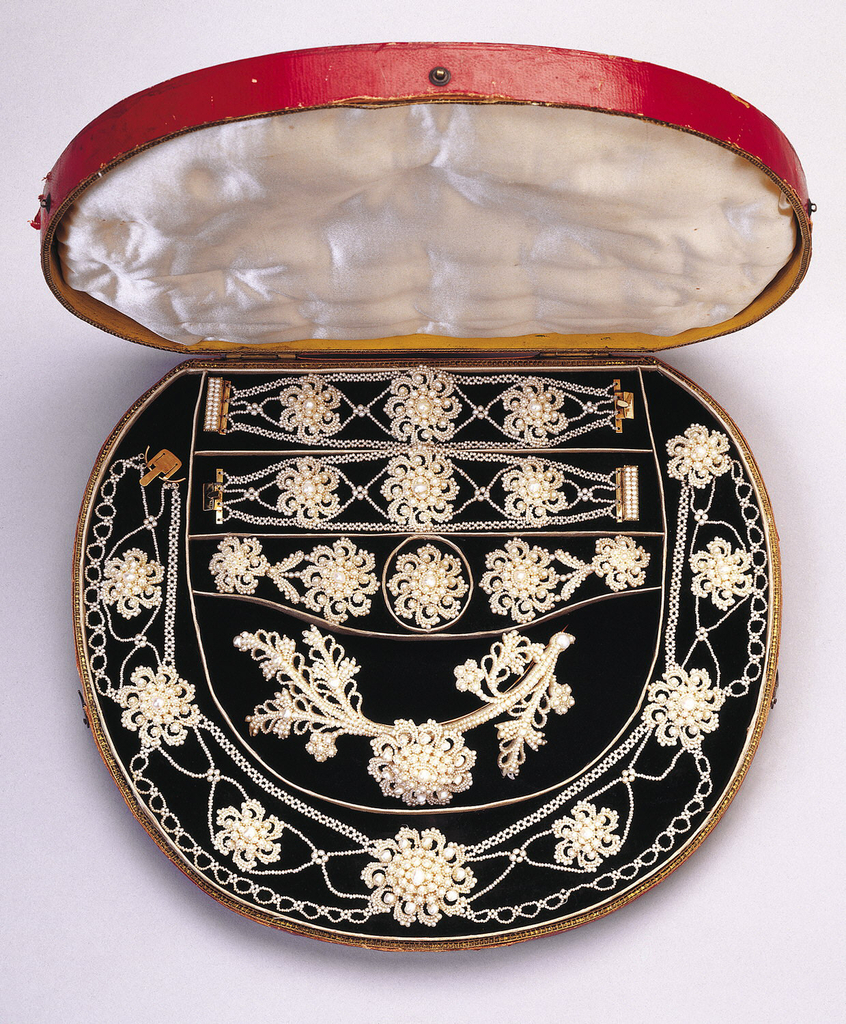The colors of the rainbow are captured in this ring by Francisco Rebajes, highlighting the luminescence that naturally occurs in abalone shell and pearls. This adornment for the hand is composed of an adjustable silver band featuring a lustrous mass of shell from the abalone, a type of sea snail, combined with a baroque pearl...
In celebration of Women’s History Month, March Object of the Day posts highlight women designers in the collection. The Venus brooch by Judy Onofrio radiates with a splash of color and a sense of humor. Reminiscent of fruit-topped headdresses seen in old movie musicals, the form is decorated with tiny found fragments–plastic beads suggesting oranges,...
This stainless steel sugar bowl designed by architect Michael Graves for Italian metalwork manufacturer Alessi S.p.A. is part of a line of kitchen and table wares that have found their way into homes around the world. Graves’s model 9093 whistling kettle of 1985 was the initial object in the range. The conical shape–with its polished...
Ruutu, Finnish for diamond or square, is the theme that is carried across the five sizes and seven hues of these modular glass vases. The vessels, created by French designers (and brothers), Ronan and Erwan Bouroullec for the Finnish glass firm, Iittala, share a minimal, rectilinear style. Like other works by the Bouroullecs, the Ruutu...
Mirrors, a commonplace fixture in the modern world, were not always the familiar accessory that they are today. Although some form of mirror has existed since ancient times, mirrors such as this 18th-century example used early industrial processes to create the fragile, metal-coated glass panes placed within a decorative frame. During the 18th century glass-making...
This bowl sends a colorful optical jolt by balancing complementary hues; the red-orange of the exterior against the turquoise of the interior. The interplay of the warm red-orange and the cool turquoise results in visual excitement as the eye shifts back and forth between the two. Adding to the interplay is the juxtaposition of the two...
Today’s Object of the Day celebrates the winners of Cooper Hewitt’s National Design Awards. Honoring lasting achievement in American design, the Awards take place annually during National Design Week, with festivities for all ages celebrating design creativity and innovation. This inventive prototype for a storage system is at once playful, inventive and multifunctional. Blu Dot,...
Today’s Object of the Day is on view in Tablescapes: Designs for Dining (October 5, 2018–April 14, 2019). These two candelabra in the neoclassical style, with their detailed sculptural work and multiple candle branches, would have undoubtedly brought abundant golden light as well as a sense of luxury to any early 19th-century interior. They were...
The concept of “eternal” style is a bit of an oxymoron, after all, many of today’s producers and designers roll out new and improved models on a regular basis. Thinking about cars, phones, and electronics it is easy to fall prey to the idea that everything is expendable and that each new item is better...
Each of these iron fretwork bracelets is a wide, flexible, linked band comprised of three segments with a quatrefoil-and-foliate pattern alternating with rosettes, all rendered in the Gothic Revival style. Each large ornamental clasp, which is similar in design to the smaller elements, yet more detailed, serves as a focal point when the bracelet is...
Searching through the collection, looking for something different to write about, I came across this lovely ceramic pitcher which features an exterior molded to resemble a tree trunk, branches with blossoms, and a gnarled branch handle. It captured my interest because its motif and colors are particularly evocative of Vincent Van Gogh’s painting, The Almond...
To celebrate the opening of Iridescence, on view through March 24, 2019, Object of the Day this week will feature iridescent objects in the collection. This vase with its shimmering colors and fluid lines was designed by Jacques Sicard for the Weller Pottery between 1902 and 1907. It was created using gray-white clay and is...
This very modern looking gold brooch dates to the 1870s. Its geometric form is comprised of cylindrical elements and tiny rivet-like bosses (round knobs, studs, or other protuberances). The symmetrical structure features a central shaft with two sets of ten small cylinders bundled around the center. Encircling these is a large beaded band at the...
This U.S. insignia brooch by Trifari dates back to 1945, and is made from gilded metal and glass. Wearing a pin designed after the country’s seal was an opportunity for women to express their patriotism, especially in 1945, a time marked by victory in Europe and Japan. This brooch is part of a wider trend...
This set of seed pearl jewelry from the 1830s is referred to as a parure, essentially a matching suite of jewelry comprising interchangle pieces that expand the wearability of the set. A parure has three or more pieces: typically, a necklace, at least one pair of earrings, a brooch, bracelet, and in larger sets, a...
